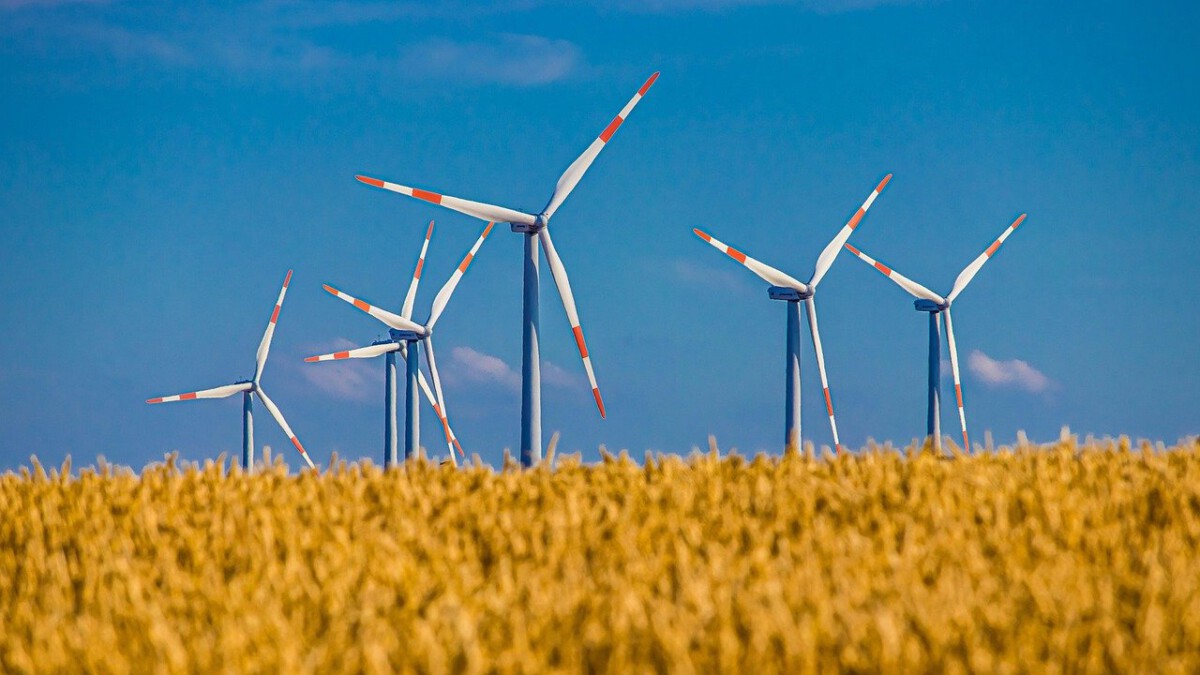Sweden: A Leader in Sustainability

Sweden consistently stands at the forefront of environmental progress, setting an ambitious target to achieve net-zero greenhouse gas emissions by 2045. Data from the Swedish Environmental Protection Agency confirms that, as of early 2024, more than 50% of the nation’s energy is sourced from renewables, mainly hydropower and wind. The country’s carbon tax, introduced back in 1991, continues to be a powerful tool—carbon emissions have dropped by 25% compared to 1990 levels, even as the economy has grown. Urban planning is another area where Sweden excels: over 80% of residents in major cities regularly use public transportation, reducing reliance on personal vehicles. The government has also committed billions to green technology innovation, aiming to further drive down emissions and energy use. Swedish cities like Stockholm and Gothenburg are frequently ranked among the world’s most sustainable urban areas. The nation’s proactive strategies make it a beacon for countries seeking effective climate solutions.
Denmark: Wind Power Innovator

Denmark is widely recognized as a trailblazer in the field of wind energy, with wind turbines producing around 47% of the country’s electricity as of 2024. The Danish government is working toward a total phase-out of fossil fuels by 2050, with over $20 billion invested in renewables over the past decade, according to the Danish Energy Agency. Copenhagen, Denmark’s capital, remains on track to become the world’s first carbon-neutral capital by 2025, thanks to extensive cycling infrastructure, eco-friendly public transport, and green building standards. In 2023, Denmark reported a 38% reduction in carbon emissions compared to 1990, a testament to the effectiveness of its aggressive climate policies. The government provides strong incentives for green energy use, and Danish companies export wind technology globally. Denmark’s focus on community-owned wind farms has helped build broad public support for its initiatives. The country’s success story inspires other nations aiming to harness wind power at scale.
Finland: Circular Economy Champion

Finland is making notable progress in embracing a circular economy model, which aims to reduce waste and optimize resource use. The Finnish government has pledged to achieve carbon neutrality by 2035, one of the most ambitious targets in the world. In 2023, Statistics Finland reported that 42% of all waste was recycled, and the government has announced plans to increase this significantly in coming years. Investments in green technology surged in 2024, with the Finnish Innovation Fund Sitra channeling over €1 billion into sustainable projects. Environmental education is deeply embedded in the Finnish school system, ensuring that future generations are prepared to champion sustainability. Finland’s focus on reusing and recycling materials has led to innovative business models and startups in the green sector. Municipalities across the country are piloting zero-waste initiatives, setting examples for urban sustainability worldwide. Finland’s comprehensive approach combines policy, education, and investment to drive lasting change.
New Zealand: Biodiversity and Conservation Efforts

New Zealand’s environmental policies are strongly focused on protecting biodiversity and unique ecosystems. The government has committed to conserving at least 30% of its land and marine areas by 2030, and as of 2024, more than 40 marine reserves have been established. The Department of Conservation recently reported measurable increases in native species populations, thanks to targeted conservation programs. New Zealand is also advancing toward net-zero emissions by 2050, with significant funding directed toward reforestation and eco-friendly agriculture. In 2023, a $100 million green innovation fund was launched to support new environmental solutions. The country’s robust ecotourism industry is built on principles of sustainability, directly benefitting both the economy and conservation efforts. New Zealand’s environmental leadership is further supported by strict protections for endangered species and continued investment in restoring natural habitats. These actions showcase how focused policy and funding can yield real results for both people and the planet.
Norway: Electric Vehicle Adoption

Norway leads the world in electric vehicle (EV) adoption, with EVs accounting for more than 54% of new car sales in 2024. The government offers extensive incentives, such as tax exemptions, toll reductions, and widespread free charging, making EV ownership attractive. The Norwegian Road Federation highlights the country’s aim to phase out fossil fuel-powered cars entirely by 2025. Renewable energy is another area of strength—98% of Norway’s electricity now comes from hydropower, giving the country one of the cleanest energy grids globally. In 2023, Norway achieved a 20% reduction in carbon emissions relative to 1990, largely driven by its focus on green transportation. Investments in public charging infrastructure have made EV travel seamless even in remote areas. Norway’s approach demonstrates how a mix of policy incentives and infrastructure investment can rapidly transform a nation’s vehicle fleet. The country continues to raise the bar for sustainable mobility worldwide.
Costa Rica: Renewable Energy Success

Costa Rica remains a global model for renewable energy, generating over 99% of its electricity from renewable sources since 2015. The Costa Rican Electricity Institute confirmed that in 2023, 99.78% of power came from hydropower, wind, and solar. National policy aims for carbon neutrality by 2050, and the country is on track to meet this ambitious goal. Extensive reforestation programs have increased forest cover from just 21% in 1987 to over 60% in 2024, reversing decades of deforestation. Ecotourism is a cornerstone of Costa Rica’s economy, attracting millions of visitors while preserving natural resources. The country has also established a series of protected areas and biological corridors to support wildlife and ecosystem health. Costa Rica’s experience shows how a small nation can achieve outsized environmental results through consistent policy and public support. The country’s success is both an inspiration and a blueprint for other developing nations.
Germany: Energiewende Initiative

Germany’s Energiewende, or “energy transition,” is reshaping the country’s electricity landscape, with renewables accounting for about 50% of generation in 2024. The German government’s climate action plan targets a 65% reduction in greenhouse gas emissions by 2030 compared to 1990, and major investments are being made in wind and solar infrastructure. According to the Federal Ministry for Economic Affairs, Germany added more than 6 GW of new solar capacity in 2023 alone. Nationwide programs support energy efficiency upgrades in homes, businesses, and public buildings. The country is also accelerating the phase-out of coal, with most plants scheduled to close by 2038. Public support for green policies remains strong, bolstered by grassroots activism and a vibrant environmental NGO sector. Germany’s Energiewende is closely watched globally as a leading example of a comprehensive, society-wide clean energy transition.
Canada: Natural Resource Management

Canada is leveraging its vast natural resources while shifting toward sustainable management practices. The federal government has pledged to cut greenhouse gas emissions by 40-45% from 2005 levels by 2030, and more than $10 billion has been invested in green infrastructure as of 2024. The Canadian Council of Ministers of the Environment reports significant progress in phasing out coal-fired power generation, with full retirement expected by 2030. Over 13% of Canada’s land is now protected, including national parks and Indigenous-managed conservation areas. Clean energy investment is ramping up, particularly in hydroelectric and wind projects. Urban centers are expanding public transportation networks to reduce car dependency. Canada’s efforts reflect a growing national consensus on the importance of balancing economic development with environmental stewardship. The country’s actions are steadily moving it toward a greener future.
United States: Struggling with Climate Action

The United States remains one of the world’s largest emitters of greenhouse gases, and progress on climate action has been inconsistent. As of 2024, emissions have only dropped by 10% since 2005, a figure that falls short of international commitments. The Biden administration is aiming for a 50-52% reduction in emissions by 2030, but political gridlock and legal challenges continue to slow progress. The latest data from the Environmental Protection Agency show that fossil fuels—particularly coal and natural gas—still supply over 60% of U.S. electricity. Investments in renewable energy have increased, but not at the pace needed to transform the grid quickly. State-level policies vary widely, with some regions aggressively pursuing clean energy while others expand fossil fuel production. The lack of a unified national approach makes it difficult for the country to lead on global climate goals. The struggle between economic interests and environmental responsibility remains a defining feature of U.S. climate policy in 2025.
Australia: Environmental Policy Gaps

Australia’s environmental performance is under increasing scrutiny as the country continues to expand fossil fuel extraction, particularly coal exports. In 2024, carbon emissions rose by 2% compared to 2020, bucking the global trend toward reduction. The government’s pledge to reach net-zero emissions by 2050 is seen by many experts as insufficient, given the current pace of policy change. The Climate Council reports that only 30% of Australia’s electricity is generated from renewable sources as of 2023, placing the country well behind other developed economies. Biodiversity is another significant concern, with over 1,800 native species at risk of extinction due to habitat loss and environmental degradation. Recent bushfire seasons have highlighted the country’s vulnerability to climate change impacts. Environmental groups are calling for a rapid transition to renewables and stronger protection for at-risk ecosystems. Australia’s experience underscores the urgent need for more decisive climate action.







